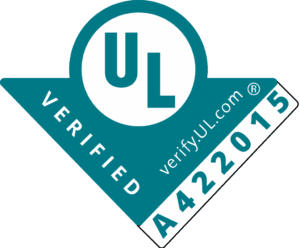Energy Efficient and Reliable UPS Power for Data Centers Now UL Verified
Both energy efficiency and high protection performance available with new eco-conversion UPSs
The main considerations for any data center design are traditionally reliability and uptime. The availability of a data center to ensure the guaranteed delivery of IT services is mission critical. But as the number of data centers has steadily grown, with the volume of servers and IT equipment also dramatically rising, the financial and environmental cost of provisioning power and cooling has become an increasing burden on facility budgets.
Over the last decade, UPS systems have entered the market complete with an energy-saving operating mode commonly known as “eco-mode.” The promise of eco-mode is to help deliver the low power usage effectiveness (PUE) demanded from modern data centers, combined with the promise of high efficiency operations to reduce the pressure on data center OpEx.

Basic eco-mode UPS systems explained for data centers
The topology underlying eco-mode UPS is somewhat similar to the basic mode of operation used in smaller, single-phase offline UPS commonly known as “standby” or “line interactive” UPS designs (for more information, please see White Paper 1, The Different Types of UPS Systems). In these types of UPSs, the inverter/rectifier circuits are offline in normal operation, and therefore there is a potential risk of exposing the load to raw mains power.
However, the larger 3-Phase double-conversion UPSs normally used to protect data centers are typically equipped with a static bypass path incorporating features that act as a source of redundancy for the UPS inverter. Additionally, and importantly, unless there is a fault condition, which is rare, the critical load is not subject to power disturbances even during a main power problem.
In a typical eco-mode, the load is powered by the bypass path and the UPS inverter is in standby mode, engaged only should the mains fail. The benefit is that the efficiency of the bypass path is 98-99%, compared with base UPS efficiency typically between 94-97%. The UPS must continually monitor the mains power and quickly switch to the UPS inverter before any problem can affect the load.
Although UPSs running in eco-mode are able to deliver a potential 2-3% reduction in data center energy consumption, the tradeoff is a reduced level of protection. In fact, eco-mode 3-Phase UPS models only achieve IEC 62040-3 Class 3 protection levels, the lowest protection Class. Therefore, the protection level can be a valid concern.
How does an advanced eco-mode UPS differ?
In advanced eco-mode, the primary power path in normal operation is the bypass path, but the inverter remains in parallel with the input, without handling the load current. This arrangement means it can more seamlessly take over the supply to the output should a mains failure occur. Advanced eco-mode offers some additional filtering advantages too, shielding the utility from harmonic currents generated by the loads, although there is a consequent, if small, loss in efficiency in the 0.5-1.0% range.
Schneider Electric ECOnversion takes protection to another level with IEC 62040-3 Class 1 verification
Schneider Electric has developed and patented ECOnversion, in which the power inverter runs constantly to perform any necessary line conditioning while constantly charging the UPS battery. It stops short of full double conversion when not required and should there be a power disruption, the UPS kicks in immediately because the converter is always running. In ECOnversion mode, the load is never exposed directly to unconditioned utility power, and although efficiency may drop a little below 99%, it’s a small price to pay for the assurance of increased reliability.

As the technology has matured, UPSs with ECOnversion, such as the Schneider Electric’s Galaxy VX range, are able to provide flexible operations to meet a range of uptime and power consumption goals. Incorporating innovative 4-level inverters, the Galaxy VX UPS has the capability to operate in double conversion mode, eco-mode or in ECOnversion mode for up to 98.8% ultra-high efficiency. In addition to the UPS delivering output voltage in both eco-mode and ECOnversion mode, Schneider’s Galaxy VX has also achieved compliance with IEC 62040-3 Class 1 UL verification.
Independently tested by UL, ECOnversion has demonstrated its ability to react as a Class 1 rated system according to ICE 62040-3, based on possible outage situations. Third-party verification from UL provides peace of mind and proof of operating performance to data center managers responsible for ensuring the availability of mission critical services, as well as for specifiers underwriting designs and professional indemnity.
Schneider Electric UPS with ECOnversion delivers high efficiency savings for data centers
ECOnversion represents an entirely new mode of UPS operation. Users no longer have to wrestle with the tradeoff between higher efficiency and lower levels of protection or more robust protection while consuming higher levels of energy. ECOnversion breaks this mold by simultaneously offering both high efficiency and high protection. The Schneider Electric Galaxy series of UPSs all meet Class 1 requirements, while the specific Galaxy VX model is also UL verified.
The Galaxy VX with ECOnversion, provides up to 3% savings in energy efficiency and offers more power protection for connected loads than standard eco-mode variants. Users also enjoy the peace of mind afforded by UL-approved Class 1 compliance.
To explore more about this topic, read White Paper 157, Eco-mode: Benefits and Risks of Energy-saving Modes of UPS Operation.
The post Energy Efficient and Reliable UPS Power for Data Centers Now UL Verified appeared first on Schneider Electric Blog.